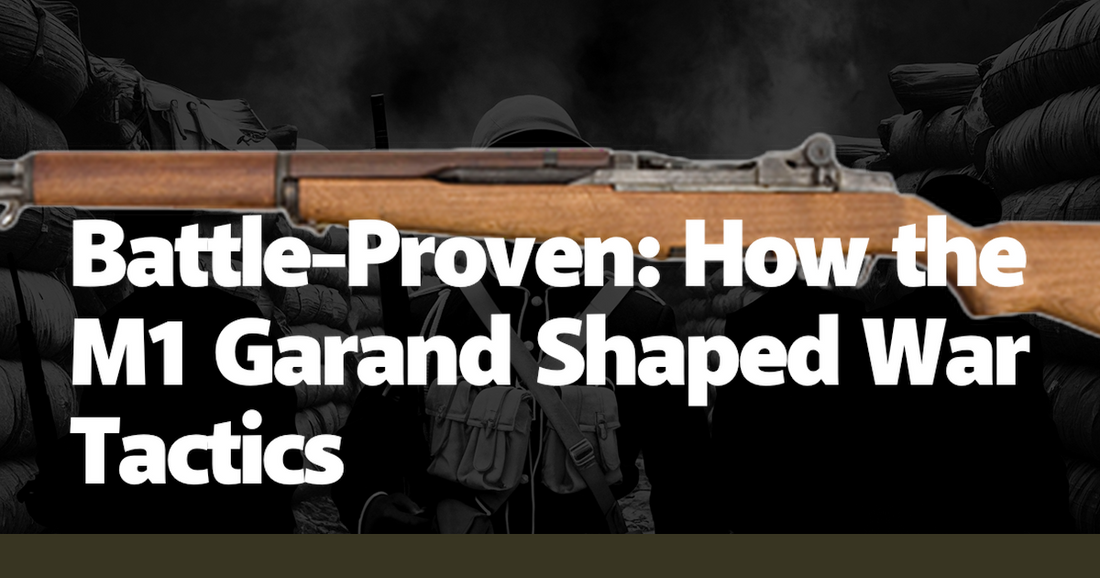The M1 Garand, a semi-automatic rifle chambered in .30-06 Springfield, revolutionized infantry tactics and combat effectiveness during World War II. Prior to its introduction, bolt-action rifles were the standard issue for most armies, requiring soldiers to manually cycle the bolt after each shot. This process was not only time-consuming but also left soldiers vulnerable during critical moments of engagement. The M1 Garand’s semi-automatic capability allowed American troops to maintain a higher rate of fire, significantly enhancing their combat effectiveness. General George S. Patton famously called it "the greatest battle implement ever devised," and this sentiment was echoed by countless soldiers who relied on its performance in the heat of battle.
One of the most significant impacts of the M1 Garand was its influence on squad-level tactics. With the ability to fire eight rounds in rapid succession without reloading, infantry squads could lay down a continuous hail of suppressive fire. This capability allowed for more dynamic and aggressive maneuvers, such as the "fire and movement" technique, where one element of the squad would provide covering fire while the other advanced. This tactic was instrumental in numerous engagements, from the beaches of Normandy to the dense forests of the Ardennes. The Garand's reliability in various conditions—whether in the scorching deserts of North Africa or the frigid winters of the Eastern Front—further cemented its status as a game-changer in modern warfare.
The psychological impact of the M1 Garand on both American soldiers and their adversaries cannot be understated. For U.S. troops, the rifle instilled a sense of confidence and superiority, knowing they possessed a technological edge. Conversely, Axis soldiers often found themselves outgunned and demoralized by the Garand’s rapid and sustained fire. Anecdotes from the front lines frequently recount enemy soldiers mistaking the semi-automatic fire for that of multiple machine guns, leading to hasty retreats and surrenders. This psychological edge was a crucial component of the Allied forces’ overall strategy, contributing to their ability to maintain offensive momentum in various theaters of war.
The logistical advantages provided by the M1 Garand also played a critical role in its effectiveness. The rifle's clip-fed design allowed for quicker and more efficient reloading compared to the stripper clips used by bolt-action rifles. Soldiers could carry more ammunition, and the standardized eight-round en bloc clip simplified resupply efforts. This logistical efficiency was particularly evident during prolonged engagements, where maintaining a steady supply of ammunition was vital. For example, during the Battle of the Bulge, American forces were able to sustain their defensive positions in part due to the Garand's ease of reloading and consistent performance in adverse conditions.
The M1 Garand’s influence extended beyond individual engagements to broader strategic outcomes. In the Pacific Theater, the rifle was instrumental in the island-hopping campaigns that characterized the conflict. The ability to deliver rapid, accurate fire proved invaluable in the dense jungle environments and close-quarter battles that typified the fighting against Japanese forces. On Guadalcanal, for instance, the Garand’s firepower allowed U.S. Marines to repel waves of enemy assaults, maintaining critical footholds that served as launching points for subsequent operations. The rifle’s role in these campaigns underscored its versatility and adaptability to different combat scenarios.
Post-World War II, the legacy of the M1 Garand continued to shape military tactics and weapon development. Its success influenced the design of subsequent infantry rifles, including the M14 and the M16, which sought to build upon the principles of semi-automatic fire and reliability established by the Garand. The rifle also saw service in the Korean War, where its performance in harsh winter conditions and mountainous terrain once again demonstrated its robustness. Veterans of these conflicts often spoke of the Garand with reverence, attributing their survival and success in part to the rifle’s dependable performance.
The cultural impact of the M1 Garand is also worth noting. It became a symbol of American ingenuity and military prowess, celebrated in films, literature, and popular media. The Garand’s distinctive "ping" sound, made when the en bloc clip was ejected, became an iconic auditory hallmark of World War II. This cultural resonance helped to immortalize the rifle in the collective memory of the American public and veterans alike. Museums and collectors continue to preserve and showcase the Garand, ensuring that its legacy endures for future generations to appreciate.
In conclusion, the M1 Garand was not merely a weapon but a transformative force in military history. Its introduction marked a significant shift in infantry tactics, providing American forces with a critical advantage in both firepower and psychological impact. The rifle's reliability, logistical efficiency, and adaptability to various combat environments underscored its effectiveness. The Garand's legacy continues to influence modern military doctrine and weapon design, serving as a testament to its enduring impact. As a symbol of American military innovation and a key factor in the Allied victory, the M1 Garand remains a celebrated icon of World War II and beyond.

